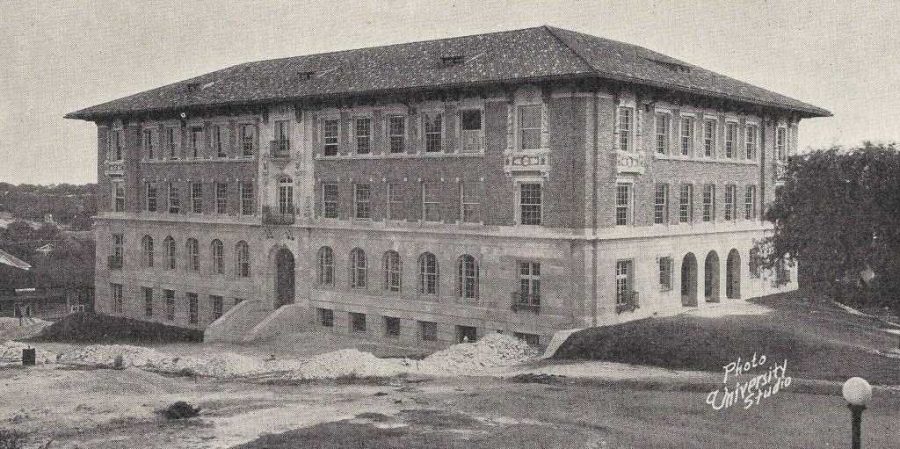Stories of Stories: Garrison Hall, Herbert Greene’s humble genius
April 6, 2023
Tucked behind a canopy of live oaks sits an understated edifice. The building’s dull colors and subtle ornaments don’t accrue the same fanfare as Battle Hall, its esteemed sister, but upon a closer look, Garrison Hall stands as a pioneering chronicle of Texas history.
Larry Speck, professor of architecture, said credit for Garrison Hall’s character should go to its innovative Texan architect, Herbert Greene. Speck said Greene followed the architectural precedents set by Cass Gilbert in Battle and Sutton Hall, but he did so with a Texan touch.
“If Cass Gilbert was making buildings for a great university, Herbert Greene was making buildings for the University of Texas,” Speck said.
Greene took the universally academic ornamentation of Battle Hall and modified the iconography, Speck said. Garrison Hall housed the history department when it was built in 1926, Speck said, so it made sense for the icons to chronicle Texas history.
Speck said he identifies Garrison Hall’s ornaments during campus tours he leads for his course, Architecture and Society. Building details include the names of William B. Travis and Stephen F. Austin on the windows, as well as lonestars, bluebonnets and longhorn skulls.
Some of the most enigmatic emblems — Spanish and Texan cattle brands — adorn the entire building, Speck said.
“If you’re thinking of the history of Texas, you were thinking of the history of big ranches,” Speck said. “(Garrison Hall) is recording this wonderful story of Texas chronologically, from early ranches on the west face (of) the building (to) ranches of the (1926) era on the south face.”
Speck said the building’s positioning makes for another enigmatic feature — instead of directly across Battle Hall, Garrison Hall sits slightly south. At the time of its construction, Speck said, campus designers planned for the East Mall to serve as the University’s grand entry.
“Garrison Hall would have been the corner of this major East Mall and main plaza,” Speck said. “But they made the South Mall the primary mall and the East Mall much narrower. So now, Garrison Hall is this orphan sitting out there. That’s why it’s not symmetrical (with Battle Hall).”
Beyond its ornamentation and positioning, the building’s adaptation to its sloped topography while honoring Gilbert’s architectural precedent serves as a testament to Greene’s genius, Speck said.
“It’s one thing to put Sutton Hall on a flat piece of ground and make the Renaissance Palazzo thing work,” Speck said. “But then you go over to the site for Garrison and it falls 20 feet. Dealing with this steeply sloped site is pretty clever. When you’re on the main plaza, it looks like this very calm, sitting-on-solid-ground building, but then you get a little closer and you realize it tumbles way down.”
Speck said Greene, who also designed Gregory Gymnasium, Anna Hiss Gymnasium, Waggener Hall and Littlefield Dormitory, doesn’t get enough credit for his work.
“People think of Cass Gilbert and Paul Cret (the French-American architect who designed the Tower) and they think of Herbert Greene as this Texan boy in between,” Speck said. “But wow, he did a lot of buildings. And he did a lot of really, really nice buildings that were inspired by Cass Gilbert, but they’re inventive and creative.”



